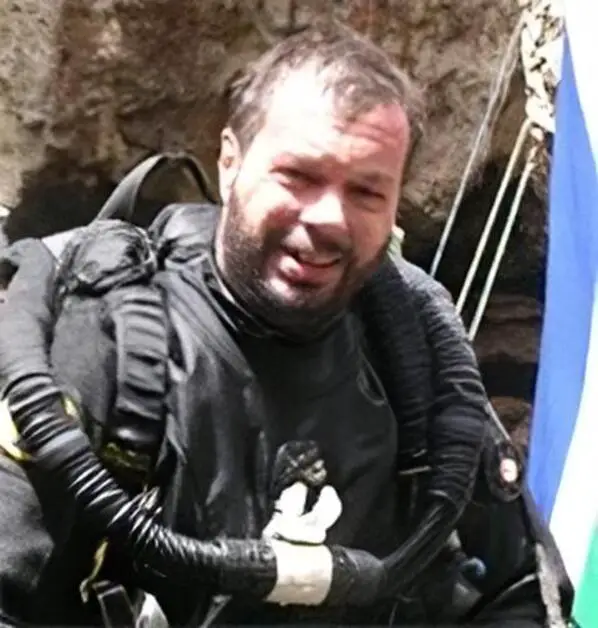A post mortem has concluded that an excessive build-up of carbon dioxide caused the black-out and death of rebreather diver Dave Shaw.
The Australian died deep in a cave while trying to raise the body of another diver.
A post mortem has concluded that an excessive build-up of carbon dioxide caused the black-out and death of rebreather diver Dave Shaw.
The Australian died deep in a cave while trying to raise the body of another diver.
Shaw, 51, was trying to recover the body of Deon Dreyer, a 20-year-old who disappeared while diving in South Africa's inland Boesmansgat Cave in 1994.
The operation was carried out at 270m – far deeper than any previously attempted working dive, outside commercial dives using recompression bells.
In addition to a bodily examination, Shaw's equipment was inspected and his gas mixtures analysed. Investigators even re-enacted his breathing patterns, based on footage from Shaw's video camera.
This showed that his breathing became increasingly labored before stopping.
It was seen that Shaw started work to free Dreyer's body but, as pre-arranged, aborted the effort when he had not succeeded after six minutes.
Ascending, he became entangled in the line previously used to mark the body. While attempting to free himself, he stopped breathing about 22 minutes into the dive.
The forensic report has been published by the International Association of Nitrox and Technical Divers.
‘Overfilling of his re-breather appears to have prevented him from exhaling properly,' the report states.
‘The breathing impairment, combined with the increased activity of recovering the body, led to a critical build-up of carbon dioxide over a period of 10 minutes.
This is sometimes called ‘deep-water black-out'.
‘David became increasingly incapacitated, eventually lost consciousness and ultimately drowned.
While relatively swift, the duration of the process favors carbon dioxide build-up as a cause rather than a lack of oxygen.'
The report adds that an element of nitrogen narcosis may have ‘significantly interfered with his ability to solve the problem before it was too late.
‘Calculations suggest that he may have experienced the narcotic equivalent of a 44m dive on air, but this would have been compounded significantly as the carbon dioxide levels rose,' it says.
He was using an Mk15.5 rebreather on the dive.
Related links
IANTD South Africa
Divers recover two bodies from Boesmansgat cave
Dave Shaw lost on cave dive to recover body
Rebreather diver finds body at 271m in Boesmansgat
Two cave divers lost diving Mexican cenote
New British cave diving record
Beginning to lose the light
Start a Forum discussion on this topic

